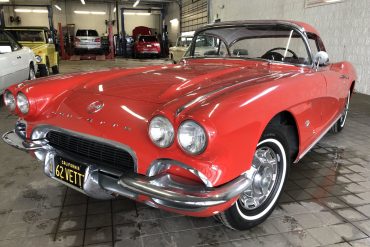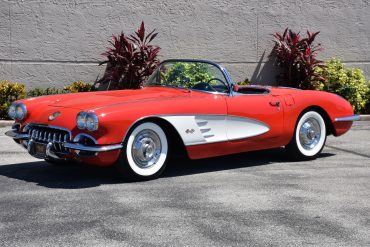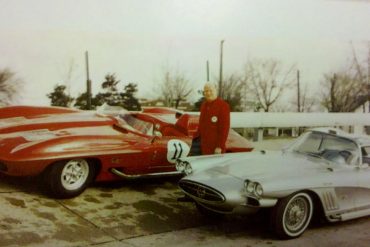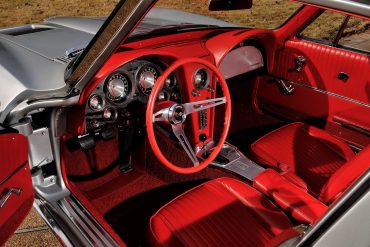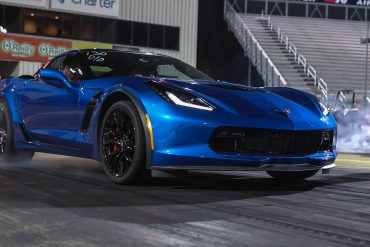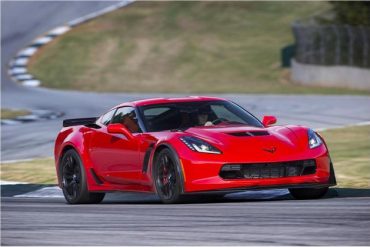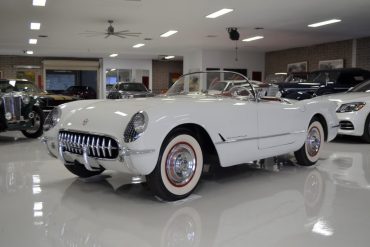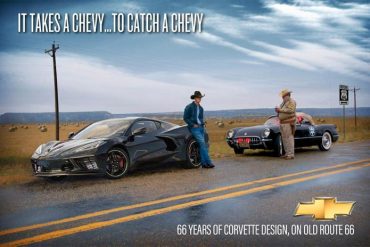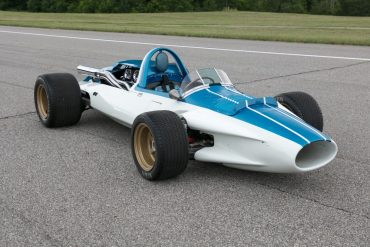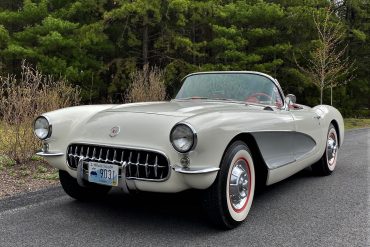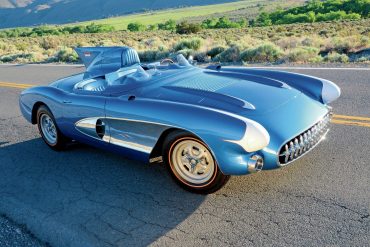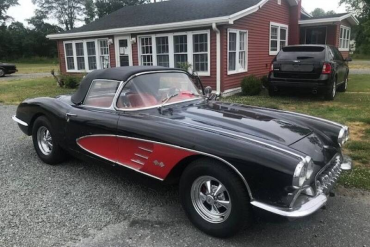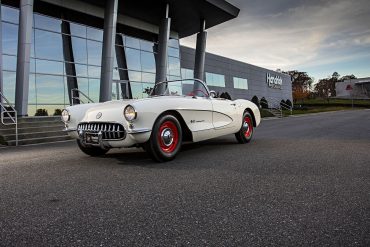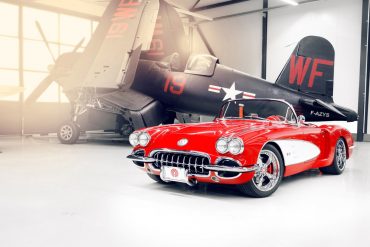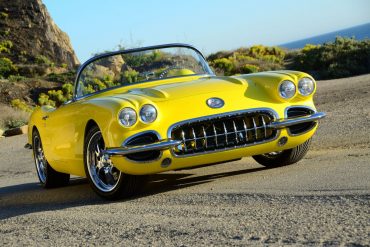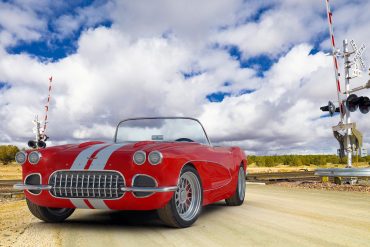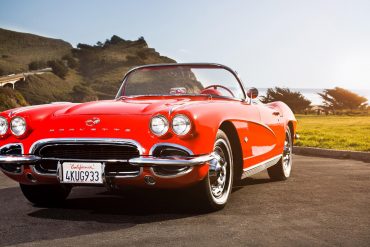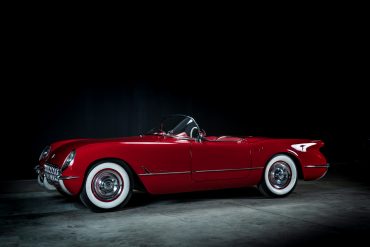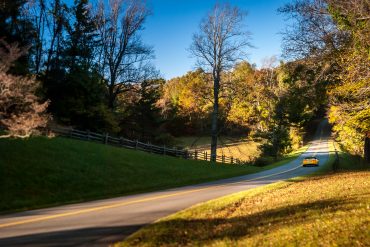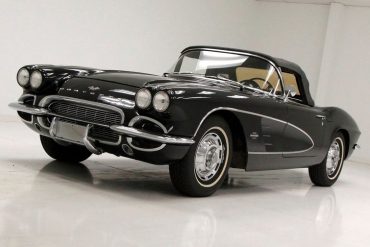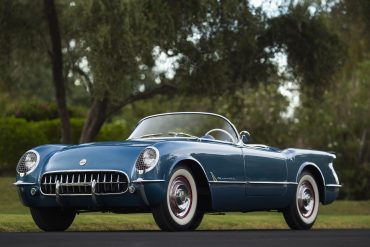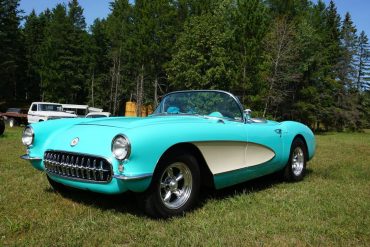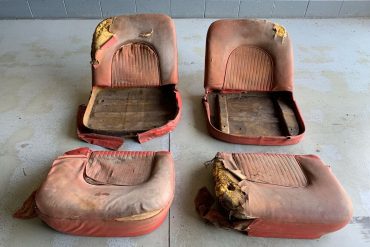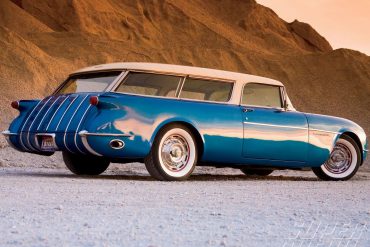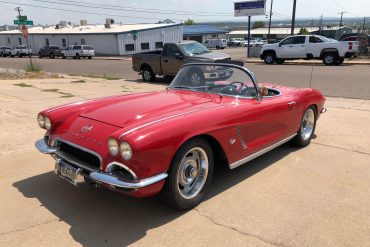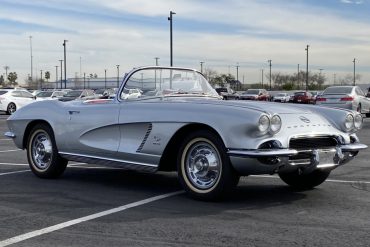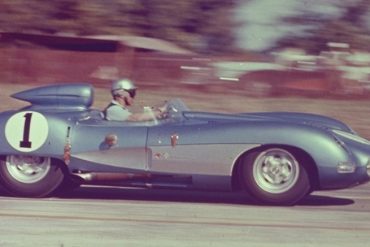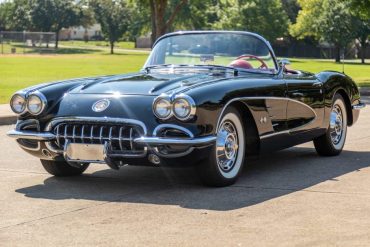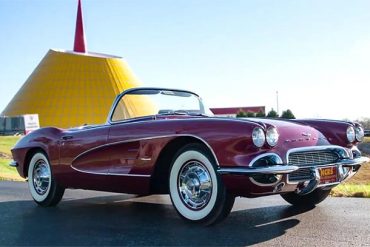For those that own an older Corvette, or those that want an C1 Corvette, a current auction at BringATrailer has...
Want to Know Which Vintage Corvette Will Be the Most Reliable? We Got You Covered. When the vast majority of...
Designed and built under the personal supervision of Bill Mitchell, the wild-looking XP-700 used many regular Corvette components (frame, chassis parts and engine). Bill Mitchell had a lot of “customs” built for himself. This XP-700 previewed the new tail of the upcoming 1961 Corvette.
Corvette Steering Wheels and Dashboards For All Generations It is no secret that the Corvette has undergone an abundant number...
Quarter-mile Times for Every Corvette Model Year When an apples to apples comparison of vehicle performance is the talk of...
With nearly 70 years’ worth of production under its belt, the Corvette is no stranger to innovation. In the GM...
Here’s Something You Won’t Likely Ever See Again – A Like New 1953 Corvette – and Its For Sale! How...
Here Are the 10 Best Corvette Ads You’ve Probably Never Seen! Since its introduction in 1953, Chevrolet has created some...
The “CERV-1” (Chevrolet Engineering Research Vehicle) was developed as a research tool for that company’s continuous investigations into automotive ride and handling phenomena under the most realistic conditions. The car was built at the Chevrolet Engineering Center at Warren, Michigan in a special project headed by Mr. Zora Arkus-Duntov, Chevrolet Staff Engineer.
FOR SALE: A Beautiful 1957 Chevrolet Corvette We are pleased to present this beautiful 1957 Chevrolet Corvette that we found...
Designed mid-1956 for Harlet Earl’s son Jerry, the SR-2 was put into racing duty in 1957. The car debuted at Daytona Beach in 1957 with a high-speed canopy, fender skirts and bullet-shaped frond headlights. Driven by Betty Skelton and Buck Baker, the car won the modified class with an average speed of 93.074 mph. The SR-2 also finished second in class for the flying mile with a top speed of 152.886 mph.
In another one of those pretty awesome finds you can get when Googling “Corvette’s for auction,” a barn find Corvette...
1957 Corvette Wallpaper Collection We have curated the ultimate collection of the best 1957 Corvette Wallpapers and HD backgrounds for...
We have curated the ultimate collection of the best 1959 Corvette Wallpapers and HD backgrounds for you to enjoy.
We have curated the ultimate collection of the 1960 Corvette Wallpapers and HD backgrounds for you to enjoy. Free to download
We have curated the ultimate collection of the 1961 Corvette Wallpapers and HD backgrounds for you to enjoy. Free to download
We have curated the ultimate collection of the 1962 Corvette Wallpapers and HD backgrounds for you to enjoy. Free to download
Get a Piece of Corvette History for Your Garage Say hello to this beautiful 1954 Chevrolet Corvette. This car is...
Corvette Performance: Ranking Every Corvette by Their Quarter Mile Acceleration Times CorvSport has always been the number one resource for...
Corvette Performance: Ranking Every Corvette by Their Quarter Mile Acceleration Times CorvSport has always been the number one resource for...
Black and Beautiful The C1 Corvette is a truly beautiful machine, and anyone who loves Corvettes can appreciate Chevrolet’s first-generation...
Only 1,400 Miles There’s nothing more pretty than a classic Corvette, and the C1 Corvette is a beautiful sight to...
FOR SALE: A Beautifully Restored 1956 Chevrolet Corvette Every once and again we discover an early C1-generation Corvette for sale...
A Piece of Corvette History Have $90,000 you want to spend on a piece of Corvette and automobile history? No,...
Carl Renner was responsible for the Nomad which was essentially a Corvette built with an extended station wagon roof. This meant the Corvette shared its lightweight fiberglass body, ‘Blue Flame’ inline-6 engine and curvaceous styling with the Nomad.
This Is the C1 You Really Want The C1 Corvette is a fantastic car, but it is an old design...
A Car Your Collection Needs The 1962 Chevrolet Corvette you see here underwent a three-year refurbishment. It’s now an immaculate...
The Corvette SS began life as an experimental race car, and was unveiled to the public at the 12 Hours of Sebring endurance race on March 23, 1957. The SS was in training for Chevrolet's debut at LeMans that year. The Sebring race was, in many ways, Chevrolet's inauguration into modern racing. But the SS never finished the race, much to the dismay of the racing community.
It Doesn’t Get Better Than This The C1 Corvette is one of those cars with an iconic shape to it....
A Beautiful Addition The National Corvette Museum has received another fantastic car as a donation. Howard Maxwell donated his award-winning...


